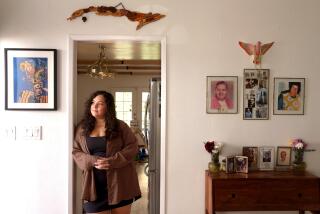Weekend Courses End at Norwalk, 4 Other Sites : Arts Academy Dies Without Funds
The UCLA-based Academy of Performing and Visual Arts, which has offered popular weekend arts courses to area high school students since 1984, closed Saturday because of a lack of funds.
According to co-founder Linda Gibboney, the academy, which provided instruction in music, dance, acting, painting and other arts in Norwalk and at four other sites, was unable to find the reliable source of funding it needed to survive.
“We had an outstanding program,” Gibboney said of the academy, which attempted to fill the gap in the high school curriculum created by the elimination of many school arts programs after the passage of tax-limiting Proposition 13. “We served 500 students the first year and the same number (this) year, but we never had a stable funding base.”
Program Started in 1984
The program was started in 1984 with a $500,000 grant from the California Department of Education. It operated out of the UCLA extension office, which Gibboney heads.
Gibboney said that the founders of the academy mistakenly thought that they could rely on state funding for at least three years. They also hoped that special legislation would be passed that would provide additional money for the program.
Public schools in California receive most of their money from the state according to a formula based on average daily attendance. The academy, which operated only on weekends and after school, was not eligible for such funding. Programs of the academy were free to students.
Local Districts Contributed
Gibboney said that the academy was unable to get grant money for the current school year and had to rely instead on contributions from 19 participating school districts and private gifts. The academy had less than $100,000 on which to operate this year, she said. UCLA absorbed some of the cost of the current classes, according to Gibboney.
“Had the funding been assured over three years, I think we would have had more success,” Gibboney said. Because of its financial problems, the academy was unable to hire a professional fund-raiser and take other steps that might have guaranteed it an adequate income, she said.
Despite the academy’s fiscal dilemma, the semester that ended Saturday was “the best program ever in terms of curriculum and emphasis,” she said.
The academy held classes at the former Excelsior High School building in Norwalk, Glendale High School, Foshay High School in central Los Angeles, Redondo Union High School in Redondo Beach and Beverly Hills High School.
Competition Not a Factor
Gibboney said she did not think that the academy had suffered as a result of competition from the new Los Angeles County High School of the Arts, which opened in the fall of 1985.
“We complemented each other,” she said. The academy, which could serve as a feeder program for the arts high school, had hoped to undertake cooperative projects with the new high school, she said.
The academy hired professional artists as faculty. Supporters in the arts included actress Jean Stapleton and producer Tony Bill. Dancer Mikhail Baryshnikov and comedian Sid Caesar were among its guest lecturers.
Gibboney and others involved with the academy said they hope that a similar program will be possible in the future. Academy co-founder Marie Plakos, an administrator in the Norwalk-La Mirada Unified School District, said that participants in the Norwalk classes hope to continue despite the closing, perhaps in cooperation with Cerritos College.
‘No Other Place’
Actor Wayne Cook, who taught the academy’s acting course at Beverly Hills High School, lamented the closing.
“I think it’s terrible,” Cook said. “There are so many potentially talented kids with no other place to be with other kids interested in the arts and (no other place) to hone their art. And now that’s going to be cut for them--again.”
Cook said he believes that youngsters who want to explore the arts but don’t know whether they want to devote their lives to them will be especially hard hit by the closing. And it will also mean a lost opportunity for poor students, he said. “There are a lot of kids out there whose parents can’t afford private lessons for them,” he said.
More to Read
Sign up for Essential California
The most important California stories and recommendations in your inbox every morning.
You may occasionally receive promotional content from the Los Angeles Times.










